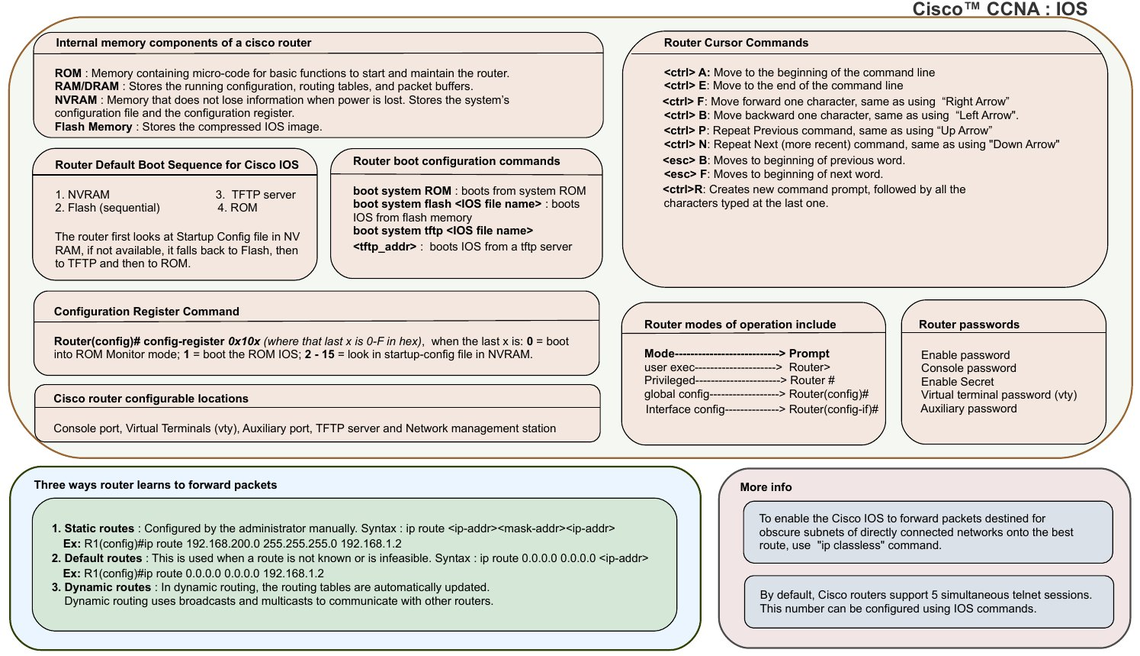Cisco IOS (originally Internetwork Operating System) is software used on most Cisco Systems routers and current Cisco network switches. (Earlier switches ran CatOS.) IOS is a package of routing, switching, internetworking and telecommunications functions integrated into a multitasking operating system
Versioning
Cisco IOS is versioned using three numbers and some letters, in the general form a.b(c.d)e, where:
- a is the major version number.
- b is the minor version number.
- c is the release number, which begins at one and increments as new releases in the same a.b train are released. "Train" is Cisco-speak for, "...a vehicle for delivering Cisco software to a specific set of platforms and features.."
- d (omitted from general releases) is the interim build number.
- e (zero, one or two letters) is the software release train identifier, such as none (which designates the mainline, see below), T (for Technology), E (for Enterprise), S (for Service provider), XA as a special functionality train, XB as a different special functionality train, etc.
Rebuilds - Often a rebuild is compiled to fix a single specific problem or vulnerability for a given IOS version. For example, 12.1(8)E14 is a Rebuild, the 14 denoting the 14th rebuild of 12.1(8)E. Rebuilds are produced to either quickly repair a defect, or to satisfy customers who do not want to upgrade to a later major revision because they may be running critical infrastructure on their devices, and hence prefer to minimise change and risk.
Interim releases - Are usually produced on a weekly basis, and form a roll-up of current development effort. The Cisco advisory web site may list more than one possible interim to fix an associated issue (the reason for this is unknown to the general public).
Maintenance releases - Rigorously tested releases that are made available and include enhancements and bug fixes. Cisco recommend upgrading to Maintenance releases where possible, over Interim and Rebuild releases.

